Using Exotic Woods to Toast Barrels
Hickory, Mesquite, American Oak and French OakAbstract
Introduction
A cooper’s fire used to toast barrels normally consists of unused wood pieces from barrel production. Thus, an American oak barrel will normally be toasted with American oak pieces.
In the food industry, many other woods are used to give foods a distinct, smoky flavor. Hickory and mesquite are examples. We worked with Golden State Vintners to test the use of these woods for toasting American oak barrels and aging Chardonnay. Additionally, French oak pieces were used to toast American oak barrels. They were compared to American oak barrels toasted with American oak pieces to determine if flavor differences developed in the wine. Rodney Strong Vineyards tested three of these barrels using Pinot Noir. Some results from their trial are presented here.
Materials & Methods
Golden State Vintners crushed Chardonnay grapes from the Napa Valley in September 1998. Prior to fermenting, 2 lbs/1000 gallons DAP was added. The juice was fermented with Premier Cuvee yeast, 1 lbs/1000 gal and fermentation lasted 12 days. At the end of fermentation MCW malolactic culture was added.
American oak barrels were toasted with hickory, mesquite, French oak or American oak pieces to a medium plus specification. Six barrels of each type were produced. The wine matured in barrel for 153 days.
Results
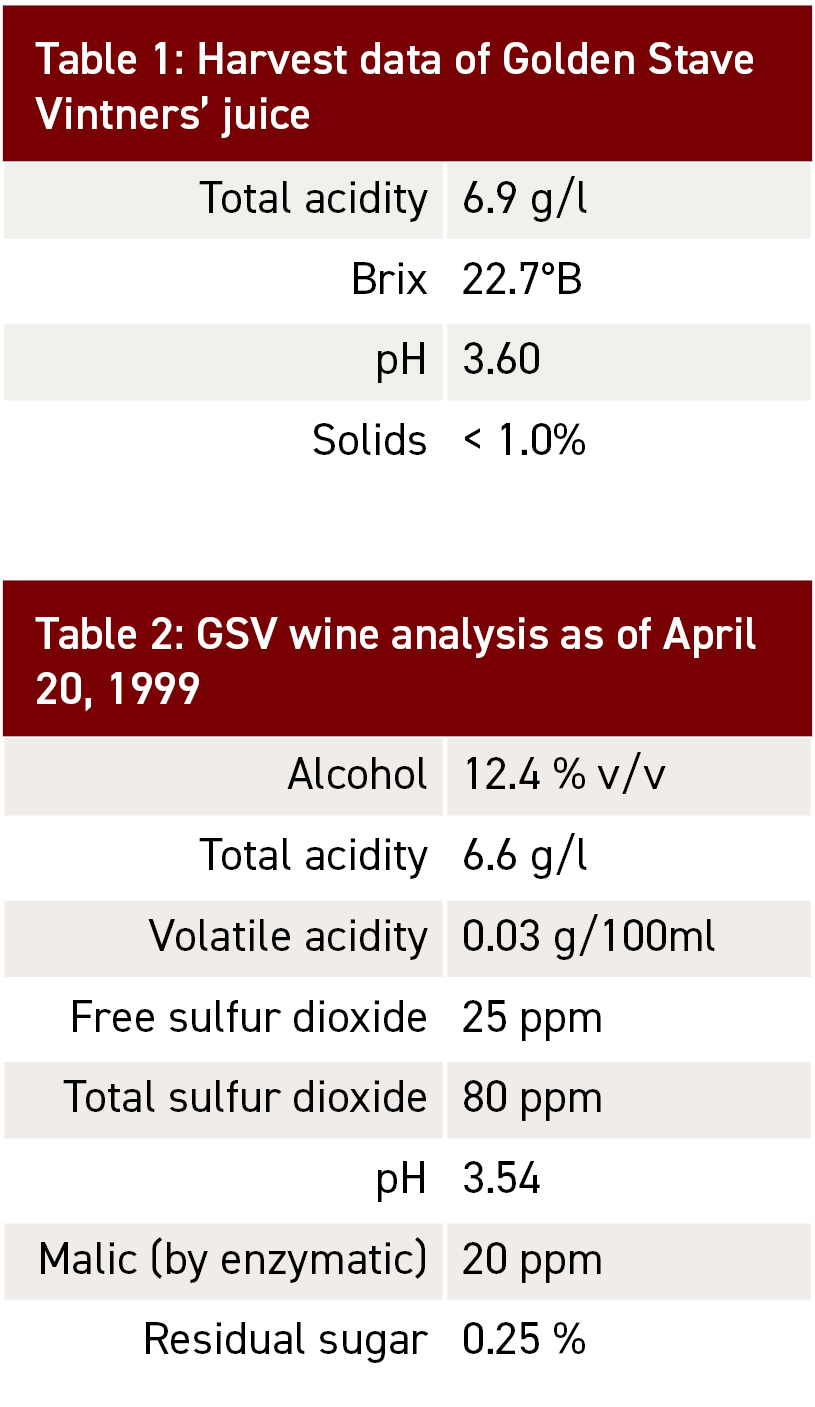
Samples of wine from Rodney Strong were analyzed for smoke phenolics and oak extractives. The results are presented in Table 3.
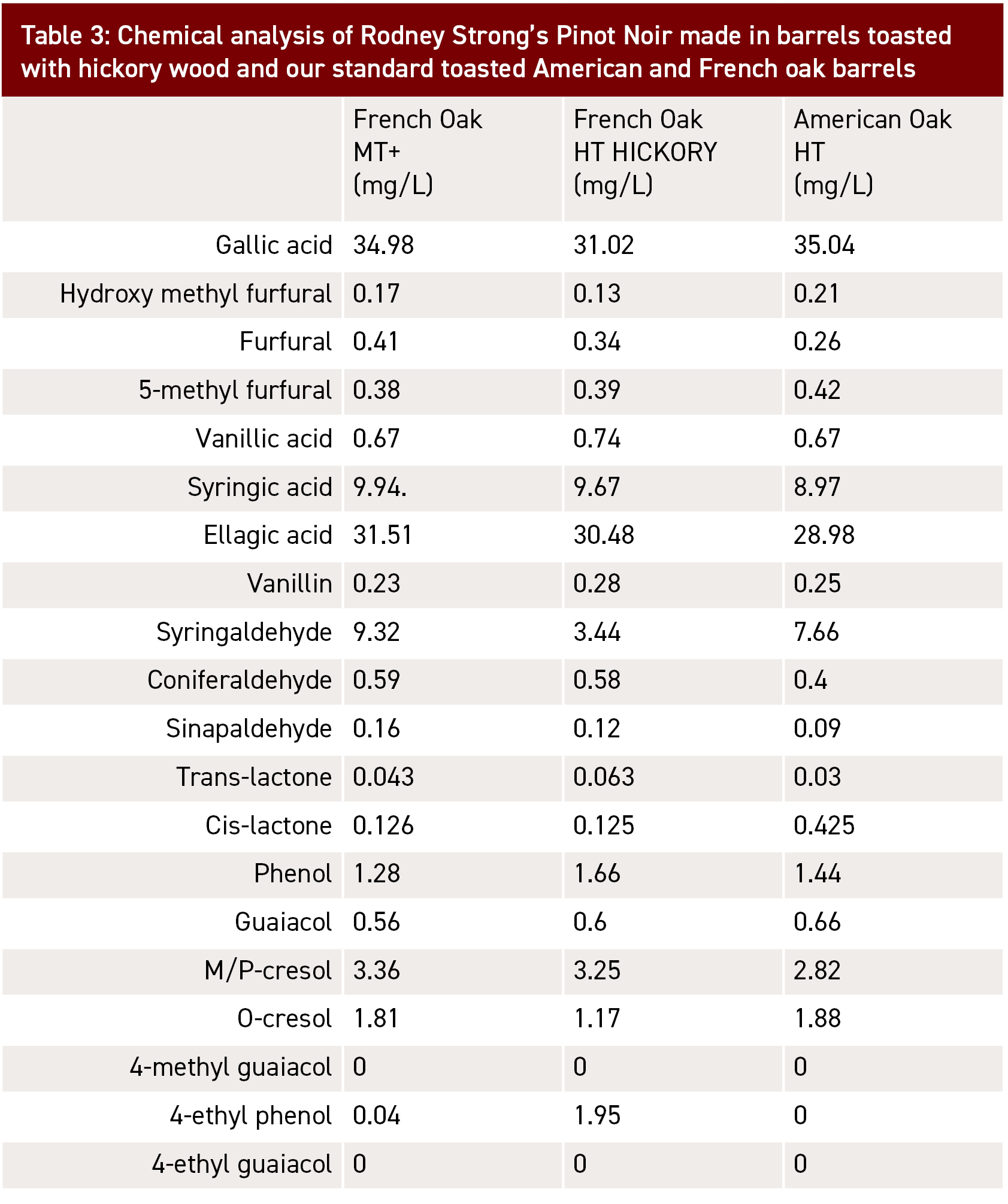
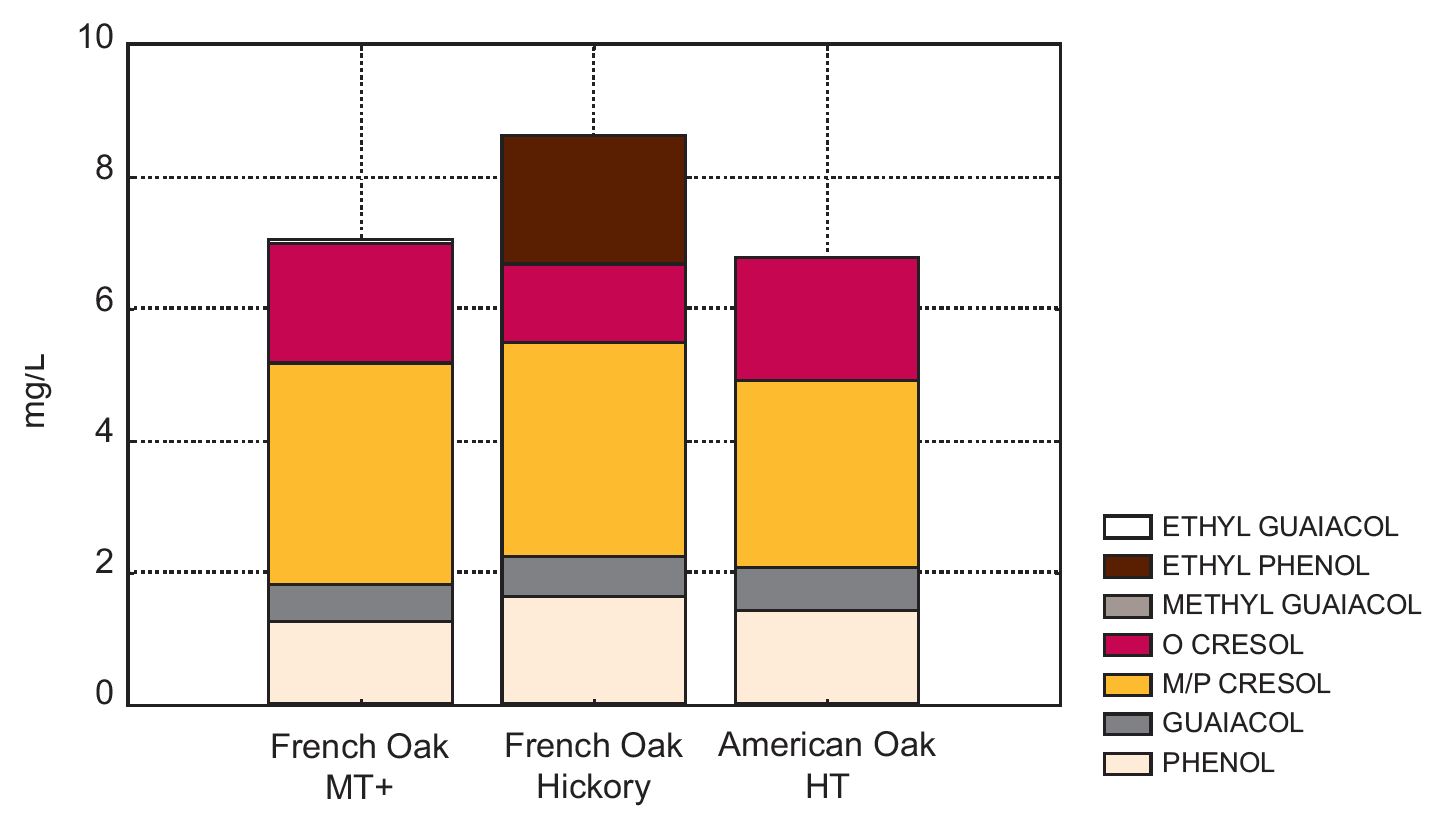
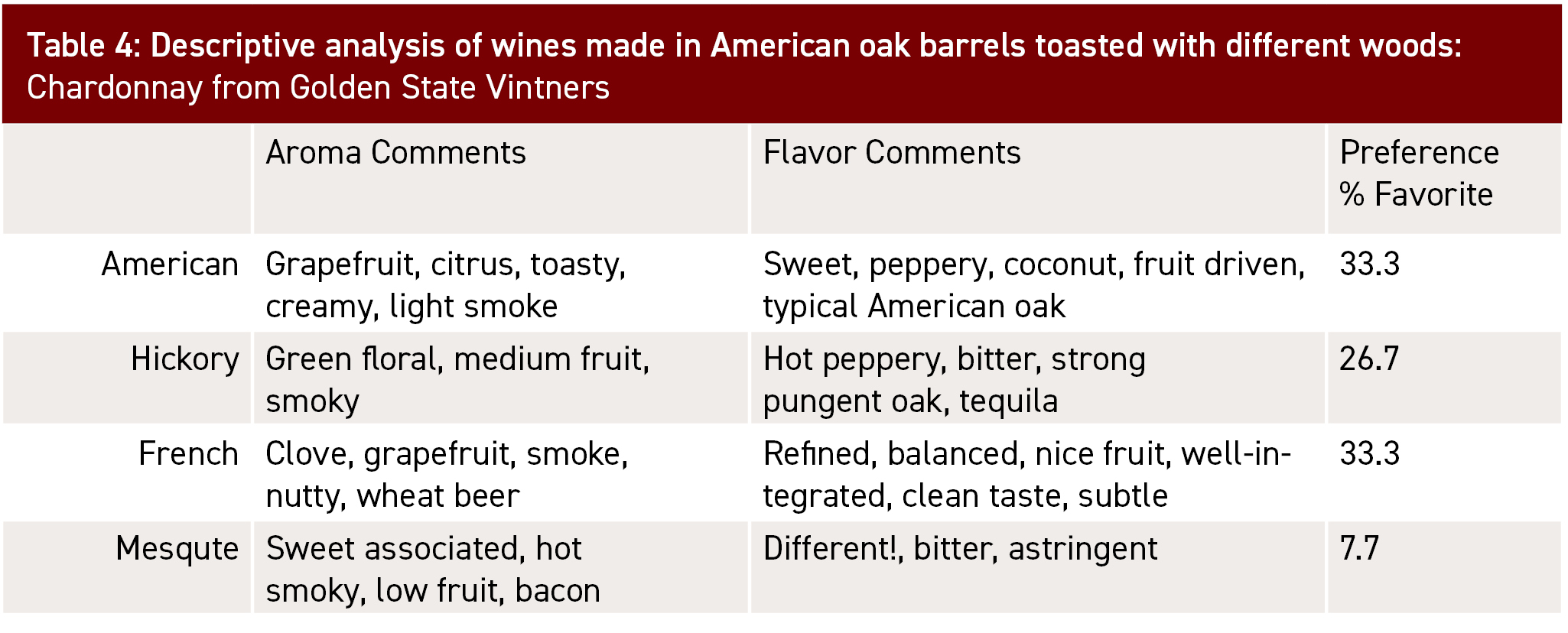
Sensory analysis indicated that both the hickory and mesquite smoked barrels produced wine with a distinct smoky character. Some panelists liked the hickory effect but few were partial to the mesquite. The wood overpowered the fruit and a definite bitterness was found in the finish.
Not a great difference was seen between the American and French oak smoked samples. Two panelists picked out a coconut flavor in the American smoked samples. The toasting of the American oak barrel with American oak pieces could have emphasized this distinctive American oak character. Otherwise the descriptors were similar for wines made in barrels toasted with American or French oak fires.
At the 4th International Barrel Symposium delegates tasted the composite wines. Quantitative descriptive analysis showed no difference in smokiness. It appears the impact of wood type used to heat barrels during toasting is low and may diminish with time. Table 5 gives the preference scores of the tasting.
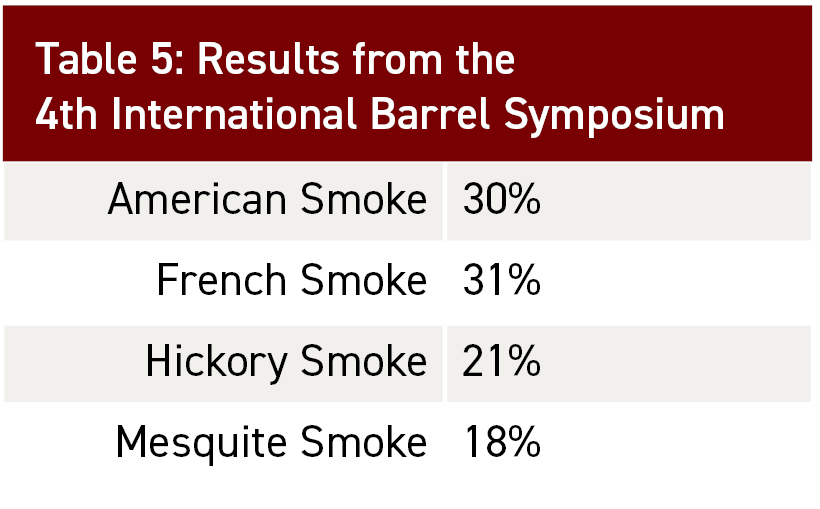
Conclusion
We used exotic woods to toast American oak barrels to determine their effect on wine flavor. Initially, the hickory and mesquite woods produced quite distinctive wines, however the flavor impact appeared to diminish over time. The mesquite smoked sample was the least preferred. It was identified as the most different. There was no difference in preference between the American and French smoked samples.
